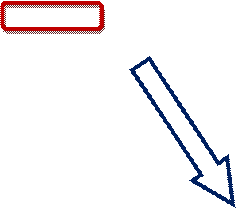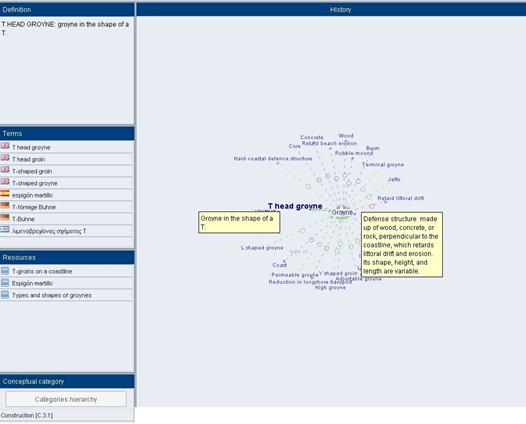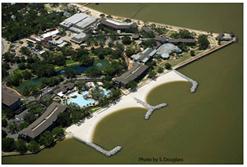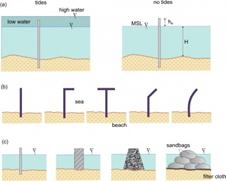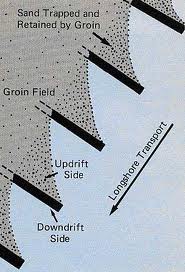Multimodal representation of specialised knowledge in ontology-based terminological databases: the case of EcoLexicon1
Clara Inés López Rodríguez*, Juan Antonio Prieto Velasco** and Maribel Tercedor Sánchez*, *University of Granada and **Pablo de Olavide University
ABSTRACT
Multimodality is the construction of meaning through multiple modes of communication suited to the needs of different users. In this article we discuss the issue of multimodality in EcoLexicon, a multimodal Terminological Knowledge Base on the environment, and focus on the role of images in the representation of specialised knowledge (entities, events, properties and relations). Finally, we propose a series of principles that should guide the selection of multimodal resources with a view to their inclusion in terminological entries, and in order to highlight the ontological structure of EcoLexicon.
KEYWORDS
Multimodality, knowledge representation, terminology, EcoLexicon, social semiotics.
1. Introduction
Terminology and terminography have been influenced in recent years by cognitive science (Faber 2009), but also by the new information and communication technologies (ICTs), which are designed in accordance with the way humans perceive, operate with, interact, understand and transmit knowledge (O’Halloran and Smith forthcoming). New ICTs combine the resources of writing, speech and still and moving images with navigation systems and layout patterns facilitating interaction. Considering that in the ICTs each of these modes offers different meaning potentials and ways of interpretation and interaction, and that they are presented simultaneously, new challenges appear when designing and evaluating terminological resources. Hence, terminographers should be aware of multimodality, that is, the existence of multiple modes of communication, in order to manage meaning construction through the effective integration of a repertory of resources suited to the needs of different users.
In this paper we describe EcoLexicon, a Terminological Knowledge Base (TKB) on the environment enhanced by both linguistic information and knowledge representation techniques. In this knowledge base, each concept appears in the context of a specialised frame that highlights its relation to other concepts, and makes its designations in different languages explicit. The conceptual representation of knowledge is multimodally enriched; linguistic description provided by definitions, concordances, contexts and other linguistic resources is accompanied by the depiction of concepts through images, animations, etc. We also propose a set of principles that should guide the selection of multimodal resources in ontology-based terminological databases.
2. Ontologies, terminology and the multimodal representation of meaning
An ontology is a particular kind of database describing the concepts in a given domain, their relevant properties in that domain and how the concepts relate to each other (Weigand 1997 cited in Pérez Hernández 2002). Some basic principles in ontology building are the following: (a) there are objects (also called entities)2 in the domain represented by the ontology; (b) objects have properties that can take values; (c) objects are linked in the ontology by means of relations; (d) objects go through processes (also called events)that cause a change of state.
Obrst and Liu (2002: 125) describe the elements an ontology should include: entities (objects), the relationships between those entities, the properties (and property values) of those entities, the functions and processes involving those entities, and some constraints on and rules about those entities. At the top-level, ontologies are normally divided into ENTITIES3, EVENTS and PROPERTIES (Mahesh and Nirenburg 1995, Moreno and Pérez Hernández 2000).
Ontologies can be used for solving problems related to translation, information retrieval and knowledge management, and other issues related to knowledge-based activities (Gillam et al. 2005: 55). In terminology, ontologies provide an interlingua to connect the terms designating the same concept in different languages. In the words of Faber and San Martín (2011: 49-50): “An ontology has the advantage of anchoring linguistic representations in one or various languages to the same conceptual representation and thus fomenting data interoperability”.
EcoLexicon was created to facilitate the acquisition and translation of environmental terms in different languages (English, Spanish, German, and more recently Greek, Russian and French), and to represent knowledge on the environment using different forms or modes such as images, definitions, contexts, and conceptual maps. EcoLexicon is hosted in a relational database4, and at the same time, it is integrated in an ontological model based on a set of conceptual relations (León Araúz et al. 2009).
EcoLexicon shares some features with ontologies, something which facilitates the representation of the domain of the environment and its vocabulary in different languages. For instance, amongst the concepts in EcoLexicon, we find ENTITIES (objects), EVENTS (processes and states), and PROPERTIES. These concepts are linked by means of hierarchical (IS-A, PART-OF), and non-hierarchical relations such as HAS-LOCATION, MADE-OF, HAS-FUNCTION, etc. All concepts are integrated in a general conceptual frame representing the processes and agents affecting the environment. This conceptual frame is called the Environmental Event (Faber et al. 2006). In the Environmental Event (Figure 1), an ENTITY with certain PROPERTIES (natural or human) and acting as AGENT initiates a PROCESS and affects another ENTITY (with the semantic role of PATIENT5), producing a RESULT. Additionally, there are peripheral categories which include INSTRUMENTS, DISCIPLINES, ATTRIBUTES, etc.
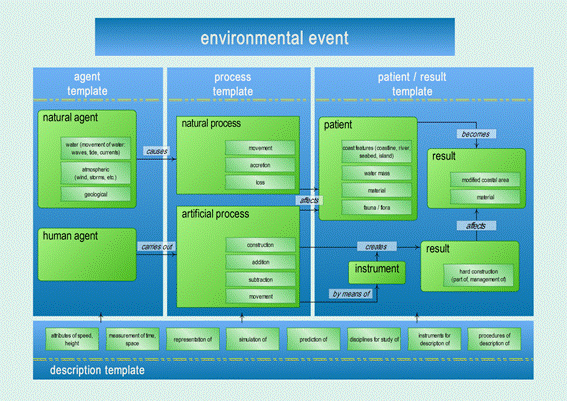
Figure 1. The Environmental Event [Source: © EcoLexicon].
Considering that the usual top-level skeleton of ontologies (ENTITIES, EVENTS and PROPERTIES) was not appropriate to account for the complexity of the domain of the Environment, the Environmental Event was formalised and further developed into domains and subdomains in the Conceptual Category section of the EcoLexicon Knowledge Base (Figure 2).
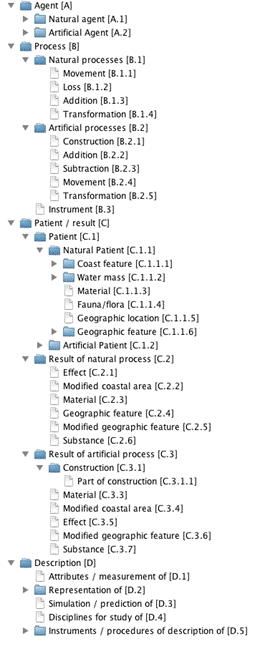
Figure 2. Representation of domains and subdomains in EcoLexicon6.
For instance, within this conceptual representation, the concept POLLUTANT is located in an AGENT template (A), in particular, in ARTIFICIAL AGENT (A.2) - SUBSTANCE (A.2.6.), but it is also located in RESULT OF ARTIFICIAL PROCESS (C.3.) — SUBSTANCE (C.3.7.). This information is retrieved when searching the concept POLLUTANT in EcoLexicon, thus helping the user to understand it as an ENTITY.
Moreover, in EcoLexicon, the concept system is not dominated by the IS-A relation, which is the basis for inheritance hierarchies where more specific concepts may automatically inherit characteristics from more general ones. For example, in an ontology, if X is the superordinate term of Y, and X is defined by the feature +Human, then Y inherits the feature +Human. When we look up a concept in EcoLexicon, it is displayed at the centre of a complex net of hierarchical and non-hierarchical relations, thus blurring inheritance. The interface of EcoLexicon is being modified to allow users to select the type of relation to be displayed.
To sum up, EcoLexicon has some shared features with ontologies. In fact, Faber and San Martín (2011: 52) state that EcoLexicon “can be regarded as a linguistically-based ontology.” In the following section, we state that in terminology the selection of multimodal resources based on clear premises can facilitate the understanding of specialised concepts and can foreground their ontological features.
3. Principles of selection of multimodal resources in terminology
A close-up of an image associated with a concept in an ontology or knowledge base will focus our attention on the detail of a particular aspect of the concept, and hence, the selection of an image will influence the description strategies as well as the depth and focus of the explanation provided by the specialised conceptual frame. For this reason, the selection of information and multimodal resources in a knowledge base should take into account the following premises (Tercedor Sánchez 2011): (1) Our conceptualisations and verbalisations are situated, often shaped by our audiences, relationships and communication partners; (2) Our thought and conceptualisations are shaped by the logical and external features of objects, but also by our cultural background and knowledge of the world; (3) The way we interact with the environment and its objects, properties, events and processes is dynamic and configures the way we refer to concepts.
The approach of Prieto Velasco (2008, 2009, 2012) is also relevant for our purposes. Prieto Velasco (2008) first proposed a methodology for exploring the visualisation of specialised knowledge in scientific and technical texts. To study how images depict specialised concepts, he analysed a series of semiotic and cognitive aspects of visual representations, namely: iconicity, abstraction and dynamism. The method involved a corpus-based way to research multimodal elements which are interwoven to form a text by studying images, their degree of specialisation, the characteristics of the text containing them, and the nature of the concept(s) depicted by the image (Prieto Velasco 2012). As a result, a classification of images was suggested in order to choose those images which proved to be most representative of a given concept, as well as consistent with the text and its target audience. So far, this approach has been successfully applied to the design and development of terminological databases, one of the most relevant being EcoLexicon.
From a semiotic point of view, language is just one of many codes for communicating meaning. Each code has inherently different representational potentials for making meaning (Kress 2010: 79) and representing knowledge, which can be transmitted by means of different perceptual channels. At the same time, humans have different orientations to modes of communication and ensembles of such modes, and may prefer temporal modes such as music and speech — in which a sequence of elements happen in time — to spatial ones such as image and writing — in which the elements are displayed in space — or modes with a spatiotemporal orientation such as gesture (Kress 2010: 15, 81). According to Baldry and Thibault’s resource integration principle (2006 forthcoming), the different semiotic modes co-occurring in texts should be analysed as interactive textual elements, since such an interaction is the main source of meaning.
The selection of multimodal resources in a knowledge base should highlight the essential elements in an ontology, and the most relevant conceptual relations (Prieto Velasco and López Rodríguez 2009: 193); in other words, a knowledge base should reflect the conceptual organisation of the domain structure, as pursued in Ecolexicon. In order to achieve that, we propose the following principles:
- The multimodal resources linked to a concept should orient the user of EcoLexicon towards the interpretation of this concept as an ENTITY (AGENTS, PATIENTS and RESULTS), EVENT (PROCESSES and RESULTS) or PROPERTY, highlighting the inherent relations associated with such concepts and their properties. One of these resources is the dynamic visual thesaurus generated when the user opens a concept and its related concepts in the knowledge base. The relations activated when clicking on a concept should also be formalised in the definition of the concept. For instance, in EcoLexicon the concept POLLUTANT is defined as “any physical, chemical, biological, or radiological substance or matter that has an adverse effect on air, water, or soil.” The definiens highlights that POLLUTANT is an ENTITY in line with the information provided by the Conceptual Category section of the knowledge base.
- Multimodal resources should add concreteness to vague and polysemous concepts, going from ‘langue’ to ‘parole,’ from ‘concepts’ to entities and events in the real world and their particular use in different disciplines.
- Multimodal information should be consistent with the definition provided in the knowledge base, focusing on significant aspects of definitions; for example, for taxonomic concepts, the key elements will be the genus (superordinate term) and differentiae (characteristics that distinguish it from all other species). For each concept, multimodal information should clearly indicate both the intension of a concept (the internal content that constitutes its formal definition and distinguishes it from other concepts) and its extension (the particular objects denoted by the concept).
- Multimodal information should replicate the way we interact with the world, its entities, properties and events, in a dynamic fashion, pointing to aspects such as particular perceptual properties of concepts or their functional role in the real world. The understanding and representation of physical objects are based on our bodily experience (embodiment) and on the situations where we interact with them (situatedness). In other words, when we encounter a physical object, our senses represent it during perception and action (Faber 2011:11–12). For example, to represent the concept DRINKING WATER, neural systems for vision, action, touch, taste and emotion partially reenact the perceiver’s experience of drinking water. Obviously, all these experiences cannot be represented in a terminological resource, but this issue can and should be considered when selecting resources for a multimodal resource.
- If we want to link linguistic, conceptual and visual resources so that they can be understood as a coherent whole, the principles suggested by Mayer 2001 (cited in Díaz and Pandiella 2007: 427) should also be followed: (a) the principle of multimedia, which defends the joint use of audiovisual resources and verbal elements in text; (b) the principle of contiguity, according to which those resources should be placed near the verbal component of a text both in time and space; (c) the principle of coherence, which promotes the removal of irrelevant resources and pieces of text; and (d) the principle of background knowledge, according to which multimodal resources should be adapted to the level of previous knowledge of the intended audience.
- The arrangement of information in space is essential for understanding which of the depicted concepts are new or presupposed; which refer to ideal or real elements, and which are emphasised because they are central as opposed to other ancillary elements. This idea has been thoroughly explored by Kress and Van Leeuwen (1998, 2006) and Martinec and Van Leeuwen (2009). These authors propose a model of the “dimensions of visual space” (Figure 3) where visual space is divided vertically in two halves, with the given information/elements on the left, and the new elements on the right (Martinec and Van Leeuwen 2009: 15). In visual space, there is also a horizontal division (ideal-real pattern), which “divides information into the more general, or idealised essence of the information (ideal), and the complementary details, or documentary evidence, or down-to earth practical realities (real)” (ibid: 20). Finally, the element or elements located in the centre provide the core information or most important part. The marginal or peripheral elements are dependent on the central element for their meaning (ibid: 24).
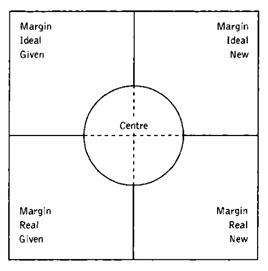
Figure 3. The dimensions of visual space (Kress and Van Leeuwen 1998)7.
4. Using images to focus on ontological structure: the case of EcoLexicon
Images can be used with different functions to highlight some of the essential elements making up a terminological entry in EcoLexicon. In EcoLexicon, every single terminological entry contains meaningful data categories (ISO 12620:1999) providing:
- linguistic information (definitions, synonyms, equivalents in other languages, syntactic and collocational information)
- conceptual information (conceptual relations and domain structure)
- contextual information (concordances and contexts)
- graphic information (URLs, images, videos, animations).
Following the multimodal approach of social semiotics (Kress 2010), we can say that in Ecolexicon linguistic elements are read following the logics of linearity (line after line) and directionality (from left to right). Images are interpreted by users according to their profiles; in other words, the amount of knowledge and the type of information they need depending on whether they are experts or not and what they need this information for. The interpretation of visual content follows the logics of space (meaning in images will be made by the arrangement of entities in a framed space, by the kinds of relations between depicted images), colour, line and shape (Kress 2010: 56). Audio components (e.g. speech) should have to be interpreted considering the sequence of linguistic elements in time. The meaning of animations will be made following the logic of the moving image, and so on. The different modes of communication are considered to be separate but complementary pieces fitting in a larger frame: the multimodal text.
Moreover, the interactive features of EcoLexicon enabling the user to call up and display information sequentially follow the logics of space and time. The distinction between given and newinformation is activated whenever the user clicks on an element.
At this point we will illustrate the above principles by searching for the concept T-head groyne in EcoLexicon.
T-head groyne /Espigón martillo |
|
Definition: Groyne in the shape of a T. A groyne is a defence structure made up of wood, concrete or rock, perpendicular to the coastline, which retards littoral drift and erosion. Its shape, height and length are variable. |
|
|
|
A C |
B |
Figure 4. Interaction of visual resources in the multimodal representation of the concept t-head groyne in EcoLexicon.
The terminological entry for the concept GROYNE includes several multimodal elements, available from the Resources tab, which contains small snapshots of the images and a link to the image file. The interaction of the different resources in the entry indicates the following:
• T-HEAD GROYNE is an ENTITY: the definition and the domain structure in Figure 4 (above) indicate that it is a defence structure and is the RESULT of an EVENT. More specifically, it is the RESULT OF AN ARTIFICIAL PROCESS (PROCESS OF CONSTRUCTION), as indicated by the Conceptual category C.3.1. RESULT OF AN ARTIFICIAL PROCESS > CONSTRUCTION.
• The network in the centre and the definition next to the concept (“Groyne in the shape of a T. A groyne is a defence structure made up of wood, concrete or rock, perpendicular to the coastline, which retards littoral drift and erosion. Its shape, height and length are variable.”)jointly indicate the inherent relations of the concept: a T-HEAD GROYNE IS-A a type of GROYNE, it HAS-FUNCTION of retarding littoral drift and erosion, and is LOCATED-AT the coastline.
• Linguistic resources (the TERMS tab) and visual resources (RESOURCES tab) help to locate the concept in the perceptual world through the comparison between the shape of this coastal feature and that of the letter T.
• Visual resources associated with T-HEAD GROYNE add concreteness to it. By the repetition of different depictions of the same entity, the terminographer makes sure that the meaning of the concept is fully understood. For example, a sketch of the different types of groynes (Figure 4C) may highlight its shape in contrast with other possible shapes (L-shaped groynes). An aerial photograph (Figure 4A) may show human uses of sediment deposits resulting from the construction of groynes such as the generation of natural beaches. Another sketch (Figure 4B) may foreground the function of a groyne: to retard littoral drift and erosion.
The navigational features of EcoLexicon which allow the user to select the elements s/he wants to open comply with the principle of contiguity (the resources are placed near the text both in time and space), although the contiguous presentation of information in space can hide interesting information. For example, if we decide to view the definition by placing the pointer over the concept, the visualisation of the conceptual relation RESULT-OF (linking GROYNE with CONSTRUCTION) is hindered. In this case the principle of contiguity is observed to the detriment of the visualisation of the relation RESULT-OF linking GROYNE with CONSTRUCTION, a relation which is especially important for understanding the network of concepts around GROYNE. For this reason, the interface of EcoLexicon is currently being modified and improved.
In EcoLexicon, more than 2500 of the nearly 3500 terminological entries include images. However, it is difficult to know exactly how many of these images refer to concepts evoking entities, processes/events and properties, since there is not a clear match between conceptual categories and grammatical classes. In traditional terminographic practice, entities are designated by nouns/noun phrases, events are named by verbs, and properties by adjectives, but nouns may also evoke processes (ABSORPTION, RUN-OFF, LIQUEFACTION, etc.). The internal interface of Ecolexicon does allow terminographers to automatically retrieve information from the database in order to elaborate lists of concepts designated by verbs, nouns, and adjectives. Nevertheless, it is not possible to list concepts on the basis of the category they belong to: entities, processes, or properties. Despite this, it is estimated that nearly 2200 concepts designated by nouns (most of them entities and processes) are illustrated with one or more images, whereas only 300 concepts designated by verbs and adjectives (most of them processes and properties) are illustrated with images.
Another important issue is the level of categorisation to which concepts belong. On a vertical axis we can distinguish more general abstract concepts and more specific concrete concepts, which are interrelated not only by hierarchical relations of hyponymy and meronymy, but also by non-hierarchical relations, such as MEASURES, STUDIES, REPRESENTS, MADE-OF. For instance, it is extremely difficult to visually represent the technique used to measure the amount of rain, PLUVIOGRAPHY; a pictorial representation is more easily achieved by depicting the instrument through which rain is measured, a pluviograph. Similarly, wood, iron or steel can be better represented in terms of an object made of those materials.
It is evident that abstraction plays an important role in knowledge visualisation and has an influence on the way pictorial representations display information (Prieto Velasco 2008). In the language of environmental science, abstract concepts often refer to magnitudes, mathematical and physical expressions, etc. which are represented by images in the form of tables, diagrams, equations, vectors, etc.
Therefore, in EcoLexicon, the inclusion of images in terminological entries highlights the most salient characteristics of environmental concepts. Additionally, multimodal representations enable the transfer of meaning from text to images and vice versa, so as to eventually help translators manage terminology: learn new concepts, identify terms, search for equivalents in other languages, visualise specialised meaning, etc.
5. Multimodality and intersemiotic translation
Multimodality and intersemiotic translation are closely related to one another, since the integration of different types of information necessarily implies using more than one semiotic mode, producing a strong link among them in terms of meaning making. To put it in simpler terms, in order to represent knowledge we need different types of communication modes depending on the information we wish to offer (linguistic, aural, visual, etc.), whose meaning must appear to be equivalent. As a result, the whole terminological entry is understood as a coherent piece of information expressed by means of several semiotic modes.
We think that terminological knowledge bases must be, above all, multimodal; they must contemplate conceptual information contained in definitions, linguistic information in contexts, graphic information in images, etc., since they all are semantically rich. Meaning should be integrated in such a way that users with different levels of expertise can access specialised information.
The interdependency among the different modes of communication is no longer complementary, but a fairly versatile way to represent specialised knowledge. Nowadays, images should not only be “a complement of,” but a kind of interlingua in multilingual databases, so as to visually convey common meaning and contribute to the sharing of knowledge, avoiding lexical ambiguity (Boguslavsky et al. 2008). In our opinion, the information contained in a multimodal terminological entry should not only be available in different modalities but also be presented in such a way that every piece of information is potentially sufficient to understand the concept regardless of its modality, as if it were the only available modality.
In this sense, understanding a concept not only involves the understanding of textual meaning (definition), but also knowledge about the world (ideational meaning), knowledge about experience in the world (experiential meaning), knowledge about how entities, events and properties actually relate in that world (logical meaning) and knowledge about how the participants in the communication process relate in a social context (interpersonal meaning) (Halliday cited in Kress and Van Leeuwen 2006: 41–44).
Consequently, when compiling a terminological entry terminographers should be aware of the different relations among the represented participants depicted in images (substances, instruments, locations, and so on) and among the interactive users of the resource (experts, students, translators, etc.), i.e. those who communicate with each other through images8. The relations between the former and the latter should also be considered.
Our analysis of multimodality is aimed at determining to what extent an image is appropriate in knowledge representation and in the intersemiotic translation from one mode of communication into another. Thus, in this context, the notion of equivalence (Vinay and Darbelnet 1958; Reiss and Vermeer 1984) used in translation studies can be useful. It is a:
relationship which defines the link between a source text and its translation; this relationship always arises from the communicative situation (recipients and goal of the translation), and the historical, social context in which the translation process takes place, thus, acquiring a relative, functional and dynamic character (Hurtado Albir 2001: 636, our translation).
Consequently in Ecolexicon we intend that all multimodal resources within a terminological entry are equivalent and interdependent (either as complements or supplements of the textual modes). This issue and the potential of different visualisation modes for the representation of different conceptual relations would benefit from further research (Prieto Velasco and López Rodríguez 2012).
6. Conclusion
In this article the concept of multimodality has been explored within ontology building in the EcoLexicon terminological knowledge base. We have seen that the conceptual representation of knowledge in ontology-based knowledge bases can be enriched with multimodal resources such as the linguistic description provided by definitions, concordances, contexts and other linguistic resources, and the depiction of concepts provided by images, animations, etc. All these multimodal resources should be connected in such a way that the subsequent interaction reflects the ontological structure underlying the knowledge base.
Terminographers and translators must then make use of ICTs to integrate different communication means for the sake of an effective communication of specialised knowledge.
Bibliography
- Baldry Anthony and Paul J. Thibault (2006). “Multimodal corpus linguistics.” Geoff Thompson and Susan Hunston (eds) (2006). System and Corpus: Exploring connections. London: Equinox, 164–83.
- — (forthcoming). Multimodal Corpus Linguistics. London and New York: Routledge.
- Boguslavsky, Igor, Jesús Cardeñosa and Carolina Gallardo (2008). “A novel approach to creating disambiguated multilingual dictionaries.” Applied Linguistics 30(1), 1–23.
- Díaz, Leticia and Susana Pandiella (2007). “Categorización de las ilustraciones presentes en libros de texto de Tecnología.” Revista electrónica de enseñanza de las ciencias 16(2), 424–441.
- Faber, Pamela (2009). “The cognitive shift in terminology and specialized translation.” MonTI. Monografías de Traducción e Interpretación 1, 107–134.
- — (2011). “The dynamics of specialized knowledge representation: Simulational reconstruction or the perception–action interface.” Terminology 17(1): 9–29.
- Faber, Pamela and Antonio San Martín (2011). “Linking Specialized Knowledge and General Knowledge in EcoLexicon.” Actes De La Cinquième Conférence TOTh (Toth 2011). 26–27 May 2011. Annecy: Institut Porphyre, 47–61.
- Faber, Pamela, Silvia Montero Martínez, María Rosa Castro Prieto, José Senso Ruiz, Juan Antonio Prieto Velasco, Pilar León Araúz, Carlos Márquez Linares, and Miguel Vega Expósito (2006). “Process-oriented terminology management in the domain of Coastal Engineering.” Terminology 12(2), 189–213.
- Gilfillan, Ian (2002). “Introduction to Relational Databases.” Database Journal: The Knowledge Center for Database Professionals. http://www.databasejournal.com/sqletc/article.php/1469521/Introduction-to-Relational-Databases.htm (consulted 28.05.2013).
- Gillam, Lee, Tariq Mariam and Khurshid Ahmad (2005). “Terminology and the construction of ontology.” Terminology 11(1), 55–81.
- Hurtado Albir, A. (2001). Traducción y traductología. Madrid: Cátedra.
- ISO 12620 (1999). Computer applications in terminology-data categories. Geneve: International Organization for Standardization.
- Kress, Gunther (2010). Multimodality: A social semiotic approach to contemporary communication. London/New York: Routledge.
- Kress, Gunther and Theo Van Leeuwen (1998). Multimodal Discourse: The Modes and Media of Contemporary Communication. London: Arnold.
- — (2006). Reading images: The grammar of visual design. London: Routledge.
- León Araúz Pilar, Magaña Redondo, Pedro and Pamela Faber (2009). “Managing inner and outer overinformation in Ecolexicon: an environmental ontology.” Poster presented at 8ème conférence internationale Terminologie et Intelligence Artificielle. (Institut de recherche en Informatique de Toulouse, 18-20 November 2009). http://lexicon.ugr.es/pdf/leonmaganafaber2009.pdf (consulted 28.05.2013)..
- López Rodríguez, Clara Inés, Buendía Castro, Miriam and Alejandro García Aragón (2012). “User Needs to the Test: Evaluating a Terminological Knowledge Base on the Environment by Trainee Translators.” Jostrans. The Journal of Specialised Translation 18: 57–76. http://www.jostrans.org/issue18/art_lopez.pdf (consulted 28.05.2013).
- Mahesh, Kavi and Sergei Nirenburg (1995). “A situated ontology for practical NLP.” Proceedings of the Workshop on basic ontological issues in knowledge sharing. International Joint Conference on Artificial Intelligence (IJCAI-1995). (Montreal, 19-21 August 1995). http://ilit.umbc.edu/SergeiPub/SituatOntology95.pdf (consulted 28.05.2013).
- Martinec, Radan and Theo Van Leeuwen (2009). The Language of New Media Design: Theory and Practice. London and New York: Routledge.
- Moreno Ortiz, A. and Chantal Pérez Hernández (2000). “Reusing the Mikrokosmos ontology for concept-based multilingual terminology databases.” Maria Gavrilidou et al. (Eds) (2000). Proceedings of the 2nd International Conference on Language Resources and Evaluation (LREC 2000). June 2000. Athens, Greece, 1061–1067.
- Obrst Leo and Howard Liu (2002). “Knowledge representation, Ontological Engineering, and Topic Maps.” J. Park and Sam Hunting Sam (eds) (2002). XML Topic Maps: Creating and Using Topic Maps for the Web. Reading, MA: Addison-Wesley, 103–148.
- O'Halloran, Kay and Bradley Smith (forthcoming). “Multimodality and Technology.” Carol A. Chapelle (ed.) (forthcoming). Encyclopedia of Applied Linguistics. New Jersey: Wiley-Blackwell.
- Pérez Hernández, Chantal (2002). Explotación de los córpora textuales informatizados para la creación de bases de datos terminológicas basadas en el conocimiento. Estudios de Lingüística del Español 18. http://elies.rediris.es/elies18/ (consulted 28.05.2013).
- Prieto Velasco, Juan Antonio (2008). Información gráfica y grados de especialidad en el discurso científico-técnico: un estudio de corpus. PhD Thesis, University of Granada.
- — (2009). “Depicting specialized language: in search of a grammar of illustrations for scientific and technical texts.” Current Issues in Language Studies 1: 41–65.
- — (2012). “A corpus-based approach to the multimodal analysis of specialized knowledge.” Language Resources and Evaluation (November 21). doi:10.1007/s10579-012-9204-1.
- Prieto Velasco, Juan Antonio and Clara Inés López Rodríguez (2009). “Managing graphic information in terminological knowledge bases.” Terminology 15(2), 179–213.
- — (2012). “Knowledge visualization and the depiction of conceptual relations in a multimodal terminological database.” Paper presented at Advances in Visual Methods for Linguistics, (University of York, 5–7 September 2012).
- Reiss, Katharina and Hans J. Vermeer (1984). Grundlegung einer allgemeinen Translationstheorie. Tübingen: Niemeyer.
- Tercedor Sánchez, Maribel (2011). “The cognitive dynamics of terminological variation.” Terminology 17(2), 181–197.
- Vinay, Jean-Paul and Jean Dalbernet (1958). Stylistique compare du français et de l’anglais. Méthode de traduction. Paris: Didier.
Websites
- EcoLexicon http://ecolexicon.ugr.es/en (consulted 28.05.2013).
- Longman Dictionary of Contemporary English Online http://www.ldoceonline.com (consulted 28.05.2013).
Biographies
 Clara Inés López Rodríguez is Tenured Professor at the University of Granada (Spain). She holds a PhD in Translation and Interpreting from the University of Granada. Her current research deals with scientific translation, terminology, and the application of corpus linguistics to terminology and translation. She has published her research in these areas in a number of high profile journals including Terminology, Meta. The Translator’s Journal, and The Journal of Specialised Translation. She can be reached at: clarailr@ugr.es.
Clara Inés López Rodríguez is Tenured Professor at the University of Granada (Spain). She holds a PhD in Translation and Interpreting from the University of Granada. Her current research deals with scientific translation, terminology, and the application of corpus linguistics to terminology and translation. She has published her research in these areas in a number of high profile journals including Terminology, Meta. The Translator’s Journal, and The Journal of Specialised Translation. She can be reached at: clarailr@ugr.es.
 Dr Juan Antonio Prieto Velasco teaches scientific and technical translation at the Faculty of Humanities of the University Pablo de Olavide in Seville, where he is a Junior Professor. His main research interests lie in the areas of terminology, knowledge visualisation and multimodality in translation. His PhD thesis is on the relationship between graphic information and specialised discourse. He can be reached at japrive@upo.es
Dr Juan Antonio Prieto Velasco teaches scientific and technical translation at the Faculty of Humanities of the University Pablo de Olavide in Seville, where he is a Junior Professor. His main research interests lie in the areas of terminology, knowledge visualisation and multimodality in translation. His PhD thesis is on the relationship between graphic information and specialised discourse. He can be reached at japrive@upo.es
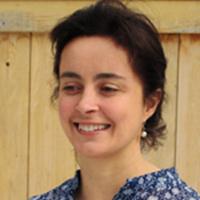 Dr Maribel Tercedor Sánchez teaches scientific and technical translation, and audiovisual translation (localisation and subtitling) at the Faculty of Translation and Interpreting of the University of Granada, where she is a Full Professor. Her principal research interests lie in the areas of terminology, cognition and the lexicon, scientific and technical translation and accessibility in audiovisual translation. She can be reached at itercedo@ugr.es.
Dr Maribel Tercedor Sánchez teaches scientific and technical translation, and audiovisual translation (localisation and subtitling) at the Faculty of Translation and Interpreting of the University of Granada, where she is a Full Professor. Her principal research interests lie in the areas of terminology, cognition and the lexicon, scientific and technical translation and accessibility in audiovisual translation. She can be reached at itercedo@ugr.es.
Notes
Note 1:
This research has been carried out within the framework of the R&D projects RECORD: Representación del Conocimiento en Redes Dinámicas [Knowledge Representation in Dynamic Networks, FFI2011-22397], and VariMed: Denominative variation in medicine: Multilingual multimodal tool for research and knowledge dissemination (FFI2011-23120), both funded by the Spanish Ministry for Science and Innovation. This research is also part of the innovative teaching project Comunicación y ciudadanía europea (inglés-español): recursos multimodales para la salud y el medioambiente, funded by the University of Granada, and has the support of a research grant by the Spanish Ministry of Education (Programa José Castillejo CAS12/0005) to fund Dr. Prieto Velasco’s research visit at the Decision and Cognitive Sciences Research Centre (University of Manchester).
Return to this point in the text
Note 2:
An entity is defined as a “formal something that exists as a single and complete unit” in the Longman Dictionary of Contemporary English Online.
Return to this point in the text
Note 3:
In this article, concepts are written in uppercase.
Return to this point in the text
Note 4:
According to Gilfillan (2002), a relational database is a collection of files which are related following a hierarchical model (where files are related in a parent/child manner), or a network model (where files are related as owners and members, and therefore, each member file can have more than one owner). In order to relate any two files, they need to have a common field.
Return to this point in the text
Note 5:
In semantics, a patient is something or someone undergoing a process or physically affected by an action.
Return to this point in the text
Note 6:
Figures 1, 2 and 4 have been extracted from the ©EcoLexicon database. We hold permission from Coastal Basics, Hydraulics Engineering, and Zbigniew Pruszak to use elements A, B and C of Figure 4 for scientific and academic purposes.
Return to this point in the text
Note 7:
We hold permission from Gunther Kress and Theo van Leeuwen to include Figure 4.
Return to this point in the text
Note 8:
See López Rodríguez et al. (2012) for a further description of the needs and interaction of users of lexicographical and terminographical resources.
Return to this point in the text
